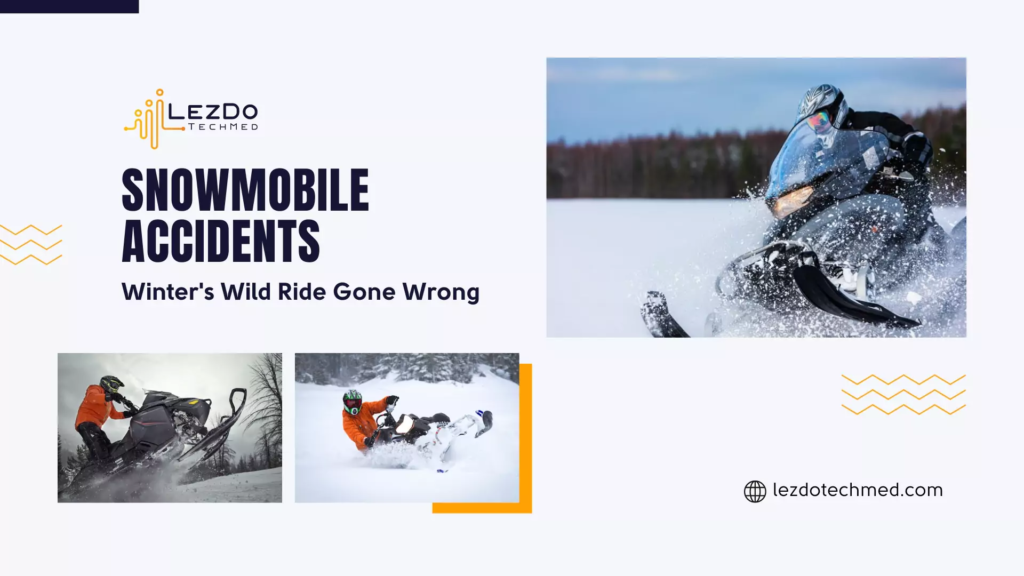Snowmobile Accidents: Causes, Impacts, and Prevention

Snowmobiles offer thrilling adventures in snowy landscapes, but they also come with risks. Understanding the causes, impacts, and prevention measures related to snowmobile accidents is crucial for enthusiasts and riders alike. In this article, we delve into the dynamics of snowmobile accidents, offering insights into staying safe while enjoying the winter wonderland.
Introduction to Snowmobile Accidents
Snowmobile accidents refer to any incident involving these motorized vehicles resulting in harm to individuals, property, or the environment. With their powerful engines and high speeds, snowmobiles can pose significant dangers if not operated responsibly.
Common Causes of Snowmobile Accidents
Mechanical Failure
Mechanical failures such as brake malfunctions, steering issues, or engine problems can lead to catastrophic accidents. Regular maintenance and pre-ride inspections are vital to ensure the proper functioning of all components.
Operator Error
Inexperienced or reckless riders often contribute to accidents through speeding, reckless maneuvers, or disregarding safety guidelines. Operator error is a leading cause of snowmobile accidents and can be mitigated through proper training and adherence to safety protocols.
Environmental Factors
Unpredictable weather conditions, poor visibility, and hazardous terrain add complexity to snowmobiling. Factors like thin ice, hidden obstacles, or avalanches can increase the likelihood of accidents. Staying informed about weather forecasts and trail conditions is essential for safe riding.
Impact of Snowmobile Accidents
Physical Injuries
Snowmobile accidents can result in a range of injuries, from minor bruises to severe trauma or fatalities. Common injuries include fractures, concussions, hypothermia, and frostbite. Wearing protective gear such as helmets, goggles, and insulated clothing can reduce the risk of injury.
Property Damage
Collisions with obstacles, trees, or other vehicles can cause significant damage to snowmobiles and surrounding property. Repairing or replacing damaged equipment can be costly, highlighting the importance of safe riding practices. luxuretv
Environmental Damage
Irresponsible snowmobiling can harm fragile ecosystems, disturb wildlife habitats, and damage natural landscapes. Following designated trails, avoiding sensitive areas, and practicing responsible stewardship can minimize environmental impact.

Safety Tips for Preventing Snowmobile Accidents
Proper Training
Obtaining formal snowmobile safety training and certification equips riders with essential skills and knowledge for safe operation. Training programs cover topics such as riding techniques, emergency procedures, and trail etiquette.
Equipment Inspection
Before each ride, thoroughly inspect your snowmobile for any signs of wear or malfunction. Check brakes, lights, fuel levels, and track conditions to ensure everything is in working order. Carry essential tools and spare parts for roadside repairs.
Weather Conditions Awareness
Stay informed about current weather conditions and forecasts before embarking on a snowmobile excursion. Avoid riding in adverse weather such as blizzards, strong winds, or whiteout conditions. Dress appropriately for the cold and be prepared for changing weather conditions.
Legal Implications of Snowmobile Accidents
Liability
Determining liability in snowmobile accidents can be complex, involving factors such as negligence, property ownership, and insurance coverage. Seek legal guidance to understand your rights and responsibilities in the event of an accident.
Insurance Coverage
Having adequate insurance coverage is essential for protecting yourself financially in case of a snowmobile accident. Review your insurance policy to ensure it includes liability coverage, property damage protection, and medical payments coverage.

What to Do If You’re Involved in a Snowmobile Accident
Seek Medical Attention
Priority should be given to seeking medical assistance for anyone injured in a snowmobile accident. Even minor injuries can worsen if left untreated in cold conditions. Contact emergency services or seek help from nearby individuals.
Document the Scene
Gather evidence and document the accident scene by taking photos, collecting witness statements, and noting relevant details such as weather conditions and terrain features. This information may be valuable for insurance claims or legal proceedings.
Contact Authorities
Report the accident to the appropriate authorities, such as local law enforcement or park rangers, especially if there are injuries, property damage, or environmental concerns. Cooperate fully with investigators and provide accurate information.
Conclusion
Snowmobile accidents can have serious consequences, but with proper precautions and responsible behavior, many accidents can be prevented. By understanding the causes, impacts, and prevention strategies outlined in this article, riders can enjoy the thrill of snowmobiling while minimizing risks to themselves, others, and the environment.
FAQs (Frequently Asked Questions)
- Is snowmobiling dangerous? Snowmobiling can be dangerous if proper safety precautions are not followed. However, with training, appropriate gear, and responsible riding, the risks can be minimized.
- Do I need insurance for my snowmobile? While insurance requirements vary by location, having insurance coverage for your snowmobile is highly recommended to protect against liability and property damage.
- What should I do if my snowmobile breaks down in the wilderness? If your snowmobile breaks down, stay with the vehicle, signal for help, and use emergency supplies such as blankets and food until assistance arrives.
- Are there age restrictions for operating a snowmobile? Many jurisdictions have age restrictions for operating snowmobiles, typically requiring riders to be a certain age or have completed a safety course.
- Can I ride a snowmobile off-trail? Riding off-trail can be dangerous and is often prohibited in designated areas to protect wildlife habitats and prevent environmental damage.




